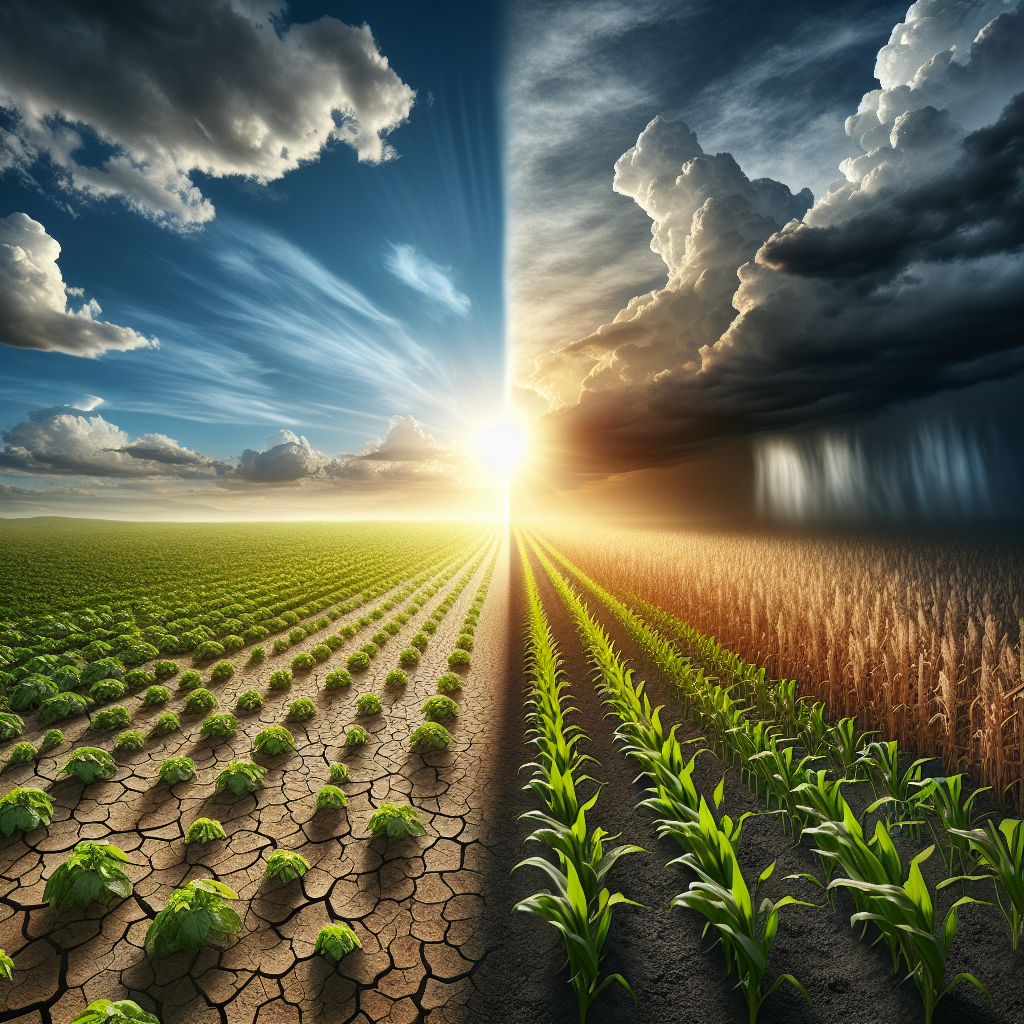Drought-Resistant Crops: A Solution for Water Scarcity
Introduction
Water scarcity is one of the most pressing global challenges of the 21st century, affecting billions of people worldwide. It is a crisis exacerbated by climate change, population growth, and unsustainable agricultural practices. As freshwater resources become increasingly scarce, there is a critical need for innovative solutions to ensure food security and sustainable agriculture. One such solution is the development and cultivation of drought-resistant crops. These crops are genetically engineered or traditionally bred to withstand dry conditions, offering a beacon of hope for regions grappling with water scarcity.
Understanding Drought-Resistant Crops
Drought-resistant crops are designed to grow in arid or semi-arid conditions with minimal water. They achieve this through various mechanisms, such as deep root systems that tap into underground water sources, reduced leaf surface area to minimize water loss, and the ability to maintain cellular function and structure even under stress. Biotechnological advancements have also enabled the creation of genetically modified (GM) crops that can endure drought by manipulating genes responsible for water retention and stress response.
The Significance of Drought-Resistant Crops
The significance of drought-resistant crops cannot be overstated. For farmers in drought-prone regions, these crops can mean the difference between a successful harvest and total crop failure. By requiring less water, these crops not only ensure food production during dry spells but also conserve precious water resources for other uses. Additionally, drought-resistant crops can reduce the need for irrigation, thereby lowering farming costs and mitigating the environmental impact of agriculture.
The Role of Technology and Research
Advancements in genetic engineering and plant biology have been pivotal in developing drought-resistant crops. Scientists identify genes that help plants survive in dry conditions and incorporate them into agricultural crops through genetic modification or selective breeding. This research is not limited to staple crops like maize, wheat, and rice; it also includes fruits, vegetables, and legumes, diversifying the options available to farmers.
Challenges and Controversies
Despite their potential, the adoption of drought-resistant crops is not without challenges. There are environmental concerns regarding the long-term impacts of GM crops on biodiversity and ecosystem health. Additionally, the reliance on proprietary seeds can increase costs for farmers and raise ethical questions about access and control over food resources. There is also a need for policies that support sustainable water use and farming practices, ensuring that the benefits of drought-resistant crops are maximized without adverse effects.
Case Studies
Several success stories highlight the potential of drought-resistant crops. In sub-Saharan Africa, drought-tolerant varieties of maize have shown remarkable resilience, providing stable yields in regions affected by erratic rainfall. Similarly, in India, genetically modified cotton has thrived in dry conditions, significantly boosting farmers’ incomes. These examples demonstrate the tangible benefits of drought-resistant crops in enhancing food security and farmer livelihoods.
The Future of Drought-Resistant Crops
Looking forward, the development of drought-resistant crops will continue to play a crucial role in addressing global food security challenges. Ongoing research and collaboration among governments, research institutions, and the private sector are essential to overcome existing barriers and ensure these crops’ widespread adoption. Moreover, integrating traditional knowledge with modern science can lead to the discovery of new drought-resistant varieties, further enriching the agricultural landscape.
Conclusion
Drought-resistant crops offer a promising solution to the challenges of water scarcity and climate change. By enabling sustainable agriculture in arid regions, they can help secure the world’s food supply and support the livelihoods of millions of farmers. However, realizing their full potential requires addressing the ecological, ethical, and economic concerns associated with their adoption. With continued research, innovation, and policy support, drought-resistant crops can contribute significantly to a more resilient and water-wise agricultural future.
FAQs
Q: What makes a crop drought-resistant?
A: Drought-resistant crops are either genetically modified or traditionally bred to possess traits that help them survive in dry conditions, such as deep root systems, reduced leaf size, or enhanced cellular water retention.
Q: Are drought-resistant crops safe to eat?
A: Yes, drought-resistant crops undergo rigorous testing and regulatory review to ensure they are safe for human consumption and the environment.
Q: Can drought-resistant crops solve global water scarcity?
A: While they cannot solve water scarcity alone, drought-resistant crops are a vital part of a broader strategy to use water more efficiently and sustainably in agriculture.
Q: Are all drought-resistant crops genetically modified?
A: No, many drought-resistant crops are developed through traditional breeding methods, though biotechnology plays a significant role in advancing drought resistance traits.
Q: How can I access drought-resistant seeds for my farm?
A: Access to drought-resistant seeds varies by region and crop. It’s best to contact local agricultural extension services or seed suppliers for information on available varieties and how to obtain them.
By embracing drought-resistant crops and the innovations that enable their development, the global community can take a significant step towards a future where water scarcity no longer threatens our ability to grow the food we need.

